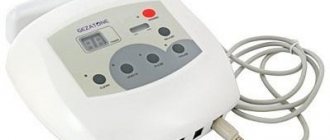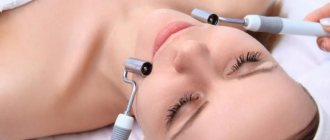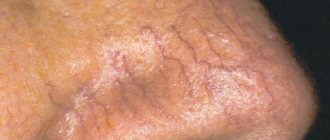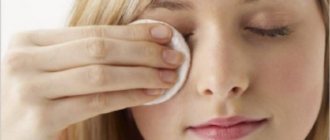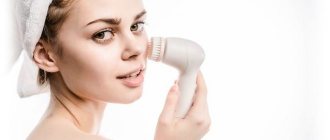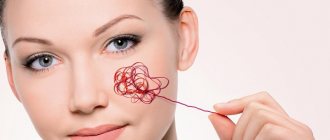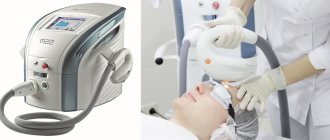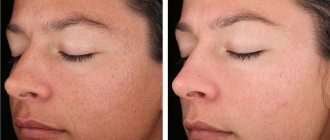Among the skin care techniques there are those that are recommended to any person at least once in their life. This procedure is cleansing - a comprehensive cosmetology program, the action of which is aimed at cleansing the pores and skin of accumulated sebum and excess keratinized cells. This procedure is most often used in patients with oily skin prone to the formation of comedones, which visually represent blackheads, but people with normal and dry skin types also require periodic cleansing. The procedure is carried out... on the skin of the face or other areas of the skin - back, chest. It is recommended to perform facial cleansing as needed - in the complex treatment of acne for oily skin, sometimes it is necessary to carry out the procedure once a week, in a maintenance mode - once a month, and in some cases, once every six months or a year is sufficient. The criterion is pore contamination.
Classification of parameters for deep skin cleansing. It could be:
- Mechanical or manual
- Hardware: vacuum, ultrasound
- Chemical: acids
Facial cleansing in the salon: stages of the procedure
Stage 1 - cleansing
First, you need to carry out a make-up removal procedure - removing decorative cosmetics, and then proceed to directly cleansing your facial skin. At this stage, a product from a professional series is used, which is used by a cosmetologist. This is advisable, since the cleansing gel sets a certain pH for the skin, which prepares the conditions for the effective action of other drugs from the same series, which are applied later.
Next, you need to gently remove the upper stratum corneum of the skin. Different beauty salons may offer you several options for surface skin cleansing: gommage, brushing, scrubbing.
Gommage or removal of the stratum corneum with a scrub is one of the most common cleaning methods. The cosmetologist selects the size of the solid particles that make up the scrub according to your skin type (large, medium or small), or when using gommage, simply applies it to the skin in a thin layer and, allowing it to dry a little, rolls it off.
Brushing is a method of hardware removal of the stratum corneum of the skin using brushes and sponges. The facial cleansing device has several attachments of various shapes and sizes, which, using circular movements, act on the surface layer of dead skin, removing it. The rotation speed is adjusted according to the patient's skin type and sensitivity.
Stage 2 – skin preparation – steaming
For quite a long period of time, cosmetologists used at this stage special steam baths based on antibacterial substances and anti-inflammatory herbs. Then more advanced devices for softening the skin with steam appeared - vaporizers.
However, today most cosmetologists prefer special products that have the effect of softening the skin.
Most often, these are lotions based on isopropyl alcohol, which not only opens the pores, but also has antibacterial activity against microbes present on the face.
Stage 3 – deep cleansing of the skin.
Mechanical cleaning
First, the skin is steamed with special gels to open the pores and enhance the secretion of the sebaceous glands. After this, the cosmetologist removes impurities from the skin. Then treatment is carried out, the purpose of which is to prevent inflammatory processes. A mask that tightens the pores is applied to the skin. At the end of the procedure, a soothing cream should be applied.
- Pros: The procedure is the most common, and the cleaning is the most thorough. During it, deep treatment of the skin is carried out, the result is visible immediately, all sensations are controlled, the instruments are sterile.
- “Cons”: Mechanical cleansing is recognized as the most harsh and traumatic for the skin, and is very painful. During the day, swelling and inflammation may remain on the face. Mechanical cleaning cannot be carried out in the presence of ulcers and inflammation.
Wanting to save money, some women, especially young girls, try to remove acne at home on their own. This is absolutely not to be desired: the required sterility is impossible, and the result may well be a significant deterioration in appearance.
It uses a device that applies ultrasonic waves to the skin. They perfectly exfoliate old layers, remove impurities and comedones. Particularly effective for oily and aging skin.
- “Pros”: the cleaning is softer, the skin is not injured. Only dead cells are removed, leaving young and healthy ones. During cleaning, the tissues are regenerated, the skin seems to glow from the inside, looks renewed and rested. Ultrasonic waves help smooth out fine wrinkles by massaging the skin. No pre-steaming is necessary. There will be no inflammation or redness after cleaning. The procedure is completely painless.
- “Cons”: inflammatory and infectious processes in acute stages, facelifts and pregnancy exclude the procedure. Cleaning is superficial, and it is better to carry it out as a preventive measure or in combination with other types.
Ultrasonic facial cleansing
In many cases, ultrasonic facial cleansing (ultrasonic peeling) comes to the aid of manual cleaning. It is carried out at the third stage using a special apparatus that emits ultrasonic waves of different frequencies. This type of cleansing is ideal for not too dirty skin as a preventative facial care product. Because Ultrasound does not penetrate into the deep layers of the skin, then such cleaning can be called superficial; accordingly, it is not indicated for patients with too wide and clogged pores, as well as with a high degree of facial contamination. Under the influence of waves, the contents of the pores are practically pushed out, dead cells are exfoliated, and blackheads are eliminated. Ultrasonic facial peeling is not accompanied by unpleasant or painful sensations; it gently removes the stratum corneum, tones the epidermis, as a result of which the skin in the treatment area takes on a fresh appearance.
It should be noted that ultrasonic peeling is very often combined with mechanical facial cleansing. This not only cleanses the pores, but also gives the skin a healthy appearance and increases its tone.
Features of the procedure and indications for its implementation
Mechanical facial cleansing is a fairly lengthy procedure during which all precautions must be observed. It is performed either by a doctor or a cosmetologist with experience. The tool used for cleaning is the Unna spoon. This is a double-sided metal spoon with special holes at the ends. On one it is located in the recess of the funnel, and on the second there are several of them and in appearance they resemble a sieve. With the help of the first, blackheads and single impurities are removed, and the “sieve” removes fat and dead cells from the skin.
Most often, people with oily skin types turn to cosmetologists. However, a person whose skin belongs to a different category may encounter a similar problem.
Mechanical cleansing can be carried out not only on the face, but also on other skin: back, neck, décolleté, shoulders.
The procedure has a number of the following indications:
- uneven complexion;
- acne;
- black dots;
- rash;
- acne and pimples;
- presence of wen.
The frequency of cleaning is as needed. If a person has dry skin, then once every six months is enough. In other cases, the procedure is performed more often. With a normal face type, mechanical facial cleansing is done once a month, and with an oily face, as acne breaks out. If the treatment is complex and includes other procedures, then this is performed once a week.
Vacuum facial cleansing
Vacuum facial cleansing at the deep cleansing stage is carried out using a special device (vacuum tube), which practically draws out the contents of the pores under the influence of different pressures. The tube is moved with rotational movements to the most contaminated area and cleansing occurs. After treating several areas, the tube must be rinsed with a disinfectant solution and the procedure must be continued.
This procedure is also non-traumatic and painless, but its effectiveness is high only if there are wide pores with easily extracted comedones, which is not the case for everyone. It can be used not only in the face area, but also in the décolleté area of the back. Most often, patients independently use portable mini-devices for vacuum cleaning at home; they are rarely used in beauty salons.
Stage 4 – chemical peeling
This stage is not always present when performing mechanical, ultrasonic or vacuum facial cleansing, but it is an excellent addition to these procedures when the pores are highly clogged and contaminated.
Most often, superficial chemical peels are used as a combination to other methods of facial cleansing, for example, based on fruit acids, retinol, mandelic acid, salicylic acid, etc. Of course, it is also permissible to carry out a deeper peeling procedure immediately after cleansing the pores. If the ultimate goal is skin polishing - narrowing pores, reducing post-acne spots, scars, carrying out such peeling after cleansing will be much more effective and will allow you to get a noticeable, lasting result.
Stage 5 – additional care as indicated to complete facial cleansing.
D'arsonval is a device that emits weak electric currents. Its effect on the facial skin after cleansing allows you to narrow pores, dry and disinfect the skin, and improve blood circulation. Darsonvalization is very effective for anti-inflammatory local effects if pustular (purulent) elements were removed during the cleaning process.
Bioptron - emits electromagnetic waves, has an anti-inflammatory and absorbable effect, significantly reduces redness. Promotes rapid skin regeneration, providing a stimulating restorative effect on tissue.
Liquid nitrogen is a fairly old technique with good effectiveness, which will quickly narrow pores, dry out some inflamed elements, relieve inflammation and redness. This procedure is also used as a tonic facial skin massage and in the treatment of acne, rosacea, and rosacea.
Stage 6 – application of a pigment-constricting anti-inflammatory mask.
After any facial cleansing, the skin is not protected and is prone to inflammation. That is why the last final stage is the impact on the skin with special products - masks. Different beauty salons use different cosmetics, so there is no standard for this stage. It is important that the mask is based on plant components, with a minimum content of synthetic chemicals, and has the ability to tighten pores and soothe the skin. After exposure to the mask, it is washed off, the face is wiped with a cleansing lotion and, if necessary, a light protective agent is applied “on the way out.”
Summary
Manual facial cleansing is one of the most painful, but only with its help is it possible to get rid of closed comedones and even out the skin texture.
Hardware methods (ultrasound and vacuum) are suitable for people with normal skin type and have a positive effect on its overall condition, and also improve turgor and elasticity.
Before deciding on any type of cleansing, consult a dermatologist. You should not prescribe procedures yourself or rely on the opinion of a friend.
| Types of facial cleansing | pros | Minuses |
| Manual (mechanical) Classic method using special tools (una spoon, Vidal needle, strainer) | Suitable for oily skin types. Recommended for non-inflammatory acne. Removes closed comedones and pustules. Destroys acne scars | Soreness. Long rehabilitation period. Mandatory follow-up home care |
| Hardware The procedure is carried out using ultrasound and/or vacuum | Ideal for normal, non-dry skin Painless Helps get rid of blackheads and enlarged pores | Does not remove closed comedones Vacuum cleaning is contraindicated in case of rosacea and susceptibility to it |
| Disincrustation Use special chemical compounds that are safe for the skin (for example, 5% sodium chloride, 1% sodium bicarbonate, 2% sodium salicylate) | Painless Gentle gentle method of cleansing No recovery period | It will take at least 5-10 sessions to achieve clearly visible results. Not recommended for dry or sensitive skin. Does not remove closed comedones. |
Beautiful and healthy skin is an indispensable attribute. And daily cleansing of the skin plays an important role. And an important role is assigned to daily cleansing. This procedure plays an important role when searching for an answer to the question of how to look younger than your age. So is it necessary to do facial cleansing? There are various means for this. But they are not able to cope one hundred percent with the negative impacts of various factors. And here you can’t do without cleansing, that is, deep cleansing, removing dead skin cells, sebum and comedones.
Nutrients cannot penetrate deep into the skin through dead cells. The result is the skin losing its natural color, a grayish tint and dullness. Excess sebum has the ability to attract dirt and dust. Cleaning is important for any type, but the procedure is especially effective for oily or problematic skin. There are many varieties of this procedure. Each type has its pros and cons.
Homemade facial cleansing
Facial cleansing at home can only be done with a vacuum device; all other methods are unsafe in the hands of a non-professional. Home facial cleansing will not give you the desired result, because it is very difficult to carry out all stages of the procedure in accordance with the rules and regulations, and it is difficult to buy special professional cosmetic products in the store. Therefore, if you do not want to become the owner of scars, pigment and inflammatory spots, burns and allergic reactions, it is best to contact a cosmetology salon or medical center to a trusted specialist (he can be a doctor or nurse with advanced training in cosmetology).
After cleansing your face, it is not recommended to use creams and scrubs for several days. Those with very dry skin are allowed to moisturize their skin once a day with hypoallergenic creams. For 7-10 days it is not recommended to sunbathe in the open sun and visit swimming pools and solariums.
Facial cleansing: reviews
As for reviews about this procedure, it is difficult to give a definite answer. It all depends on the level of the salon, the professionalism of the cosmetologist, the cosmetics used and the sensitivity of the patient’s skin. However, most patients note a significant reduction in skin impurities, reduction in pores, elimination of blackheads and comedones, and improvement in complexion.
Some note allergic reactions to components of cosmetic products and dry skin during the first 2 days after the procedure. Facial hyperemia and some swelling bother almost all patients for 2-3 hours, and then go away on their own.

